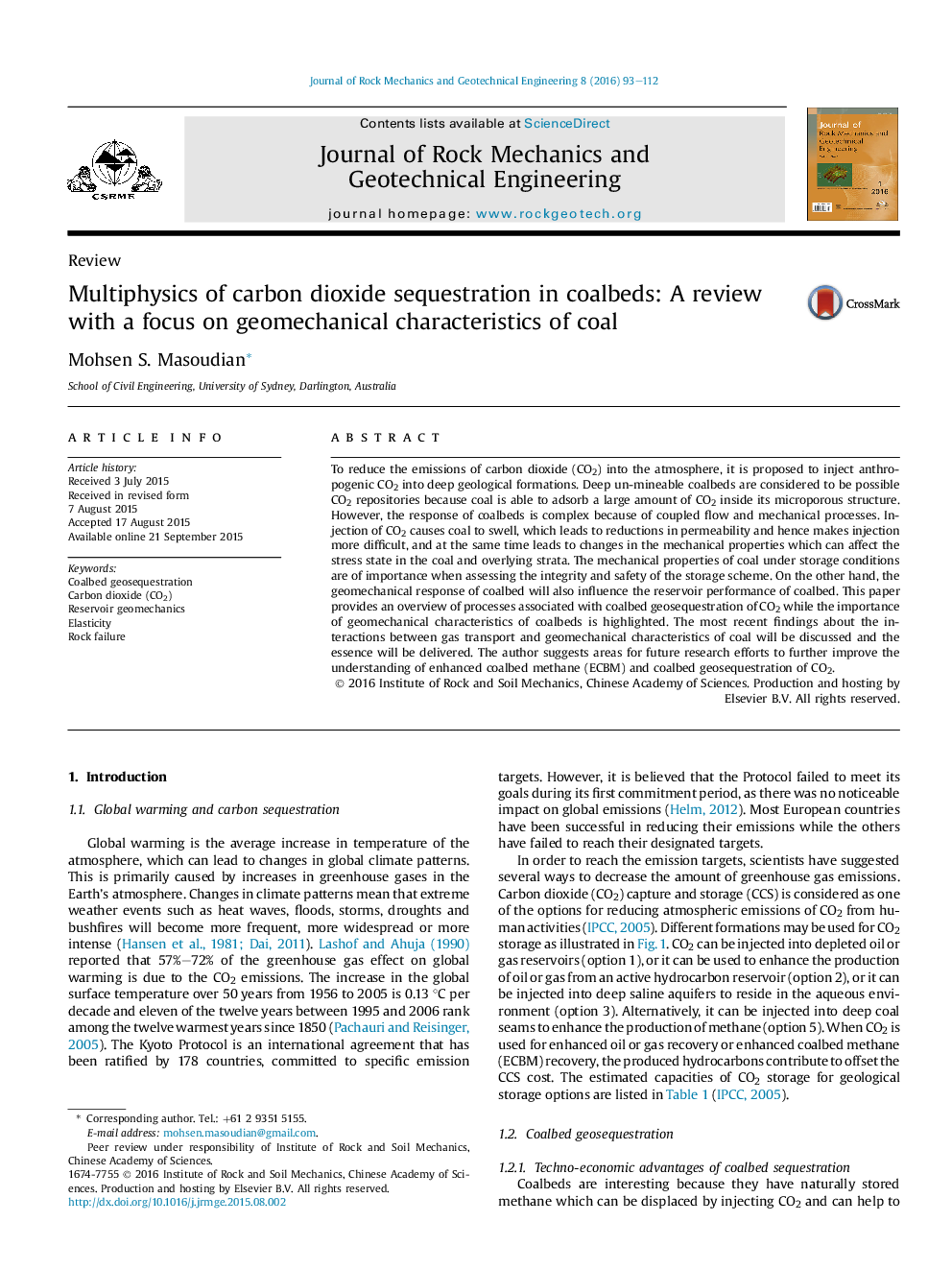| Article ID | Journal | Published Year | Pages | File Type |
|---|---|---|---|---|
| 286534 | Journal of Rock Mechanics and Geotechnical Engineering | 2016 | 20 Pages |
To reduce the emissions of carbon dioxide (CO2) into the atmosphere, it is proposed to inject anthropogenic CO2 into deep geological formations. Deep un-mineable coalbeds are considered to be possible CO2 repositories because coal is able to adsorb a large amount of CO2 inside its microporous structure. However, the response of coalbeds is complex because of coupled flow and mechanical processes. Injection of CO2 causes coal to swell, which leads to reductions in permeability and hence makes injection more difficult, and at the same time leads to changes in the mechanical properties which can affect the stress state in the coal and overlying strata. The mechanical properties of coal under storage conditions are of importance when assessing the integrity and safety of the storage scheme. On the other hand, the geomechanical response of coalbed will also influence the reservoir performance of coalbed. This paper provides an overview of processes associated with coalbed geosequestration of CO2 while the importance of geomechanical characteristics of coalbeds is highlighted. The most recent findings about the interactions between gas transport and geomechanical characteristics of coal will be discussed and the essence will be delivered. The author suggests areas for future research efforts to further improve the understanding of enhanced coalbed methane (ECBM) and coalbed geosequestration of CO2.
